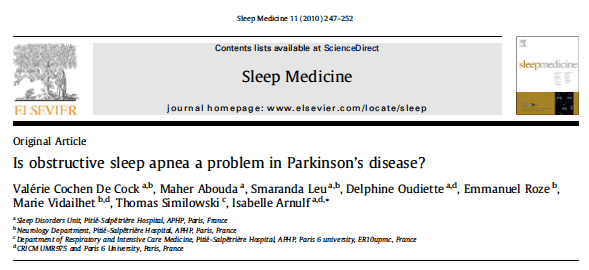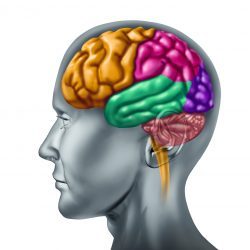“Sleep is like the unicorn – it is rumored to exist, but I doubt I will see any” Dr. Seuss
“Sleep is the most blessed and blessing of all natural graces.” Aldous Huxley
Introduction: Along the way to the diagnosis of Parkinson’s, you may have to undergo several different kinds of examinations. These tests will help your physician(s) learn what is going on with your physiology and neurological network. Remember, there is neither a blood test nor a genetic marker evaluation to provide a diagnosis of Parkinson’s. Therefore, we perform these exams both to implicate Parkinson’s and to exclude other disorders. My Neurologist says the most helpful thing is the actual patient interview (History and Physical) since most people with Parkinson’s have a characteristic set of signs and symptoms.
These posts (a series of 5 procedures) are mostly descriptive and informational. Still, they are essential to describe because they can be kind of intimidating and nerve-racking to undergo. I hope that by explaining these tests, you will be informed just in case your physician team suggests any of these tests). I am not recommending any of these procedures for you (I’m a basic scientist, not a physician). Interestingly, my Neurologist was involved only in the MRI and sleep studies, which were done after my diagnosis of Parkinson’s. The other procedures were done before my diagnosis as we (another group of very talented physicians) were trying to sort out what was wrong. These are the procedures:
Part 1 describes the Barium Swallow test (click here to read);
Part 2 gives an overview of Magnetic Resonance Imaging (MRI) (click here to read);
Part 3 highlights Polysomnography, which is a sleep study;
Part 4 presents Electromyography (EMG), which measures nerve/muscle interactions;
Part 5 characterizes Transradial Cardiac Catheterization and Angiography.
“The best eraser in the world is a good night’s sleep.” Orlando Aloysius Battista
Sleep Study is Called Polysomnography: Polysomnography is the medical term given for a sleep study. Polysomnography is an examination that helps diagnose sleep disorders. How does it work? First, polysomnography is done at your hospital in a sleep disorder unit. The exam is conducted while you are sleeping, so yes, it will take place in the evening. The equipment they hook you up to will measure your brain waves and the oxygen level in your blood while you sleep. Also, they will measure your heart rate, breathing patterns, and eye and leg movements. You can bring your favorite pillow with you for the evening. My room looked more like a hotel room, not a standard hospital room. Typically, you arrive after you have had dinner, sometime ~8 p.m. Plan on staying the entire evening; they may need to collect data for up to 8 hours.
“Sleep deprivation is the most common brain impairment.” William C. Dement
The Process Behind A Sleep Study: This is not something that can be identified by a visit to your Doctor’s office. If you suspect you have an unusual pattern of sleep (or have been told this by a partner), this is something that needs to be measured, needs to be performed while you are asleep. There are a lot of sleeping disorders, and it is usually a Neurologist that is the Specialist involved in giving and interpreting the results. Polysomnography can help diagnose several different kinds of sleep disorders, which include sleep apnea, narcolepsy, and restless leg syndrome. Polysomnography can also help diagnose unusual sleeping patterns linked to REM sleep behavior disorder.
During the overnight sleep study, using EEG monitoring, they will assess the various stages of your sleep cycle stages. The cycles of REM and non-REM sleep you go through during the night will be studied. The goal of polysomnography is to identify problem areas that you exhibit while sleeping. This is a detailed neurological and physiological study because it will determine several features of your sleep pattern by measuring your snoring, breathing pattern, eye movements, heart rate, breathing rate, and also oxygen saturation levels in your blood. Polysomnography is a painless and non-invasive procedure. It is just uncomfortable from wearing the harness and having all the probes taped to your body while you sleep. See the pictures below for me hooked up in the EEG harness (left panel and upper middle).

The technician woke me up about 4 hours into my sleep study and put a mask on similar to the one pictured above (upper right and bottom right panels). I was experiencing sleep apnea events, which were now being monitored with and without the CPAP device shown in the picture.
“There is a time for many words, and there is also a time for sleep.” Homer
Treating Sleep Apnea Using a CPAP Machine and Mask: CPAP stands Continuous Positive Airway Pressure. If following the sleep study, your Neurologist has verified you have obstructive sleep apnea, this is what you will need to sleep better and with much-improved health outcome. If you have obstructive sleep apnea, you will need to sleep with a mask hooked to a pump that blows air into your nasal passages. The pump has been calibrated to be at a high enough pressure to overcome obstructions in the airway and restore normal breathing (cited from this reference).
When diagnosed with sleep apnea, the machine you use at night gives you daily updates about how well you slept, how long, and importantly, how many obstructive apneic events you had per hour. You stop breathing during these apneic events, and you see how troubling that could be toward your overall health. You may suspect you have sleep apnea because your partner has complained that you are snoring, gasping, choking, and seem to have shortness of breath. These are the main symptoms of sleep apnea, and you would need to be treated. The annual report from my CPAP machine for 2019, when using the device, I was experiencing 2-3 apneic events/hours (usually when sleeping on my back). This is an ample reduction of sleep apnea breathing events because, during my sleep study, they measured ~25-30/hour.

“Laugh and the world laughs with you, snore and you sleep alone.” Anthony Burgess
Relationship Between Sleep Apnea and Parkinson’s: People with Parkinson’s are more likely to have sleeping problems than those who do not have Parkinson’s. Several studies conclude that Parkinson’s is linked to increasing rates of obstructive sleep apnea (see below and references cited therein). One study found 20% of people-with-Parkinson’s compared to 5% in aged-matched control people without the disorder.
You need to realize that sleep apnea can be diagnosed through a sleep study, which is good news. Additionally, the CPAP machine and use of a CPAP mask can be used successfully to treat sleep apnea. However, adapting to the CPAP machine and wearing a fitted mask is not a trivial task and takes practice. But the long-term consequence of not breathing correctly and becoming hypoxic is a known cause of fatality in older adults.
Thus, if you have Parkinson’s and you snore loudly at night, or your partner tells you that you stop breathing while you sleep, then you may have obstructive sleep apnea. Only by polysomnography testing can a proper diagnosis and treatment strategy be offered to you. It is only somewhat of an inconvenience but ultimately a most useful evaluation (in my opinion).


“It is a delicious moment, certainly, that of being well nestled in bed, and feeling that you shall drop gently to sleep. The good is to come, not past; the limbs have just been tired enough to render the remaining in one posture delightful; the labour of the day is gone” ~ Leigh Hunt
Cover photo credit: http://www.trbimg.com/img-5452831b/turbine/lat-tr-napa-cheap-la0023183376-20140905/1050/1050×591



Very interesting I have been having trouble at night so I am going to see a neurologist who specializes in pd and sleep My question is that I Never sleep well away from home on a good day I don’t know how I will fall asleep in such a strange place
On Sat, Dec 28, 2019 at 11:42 AM Journey with Parkinson’s wrote:
> Frank Church posted: ” “Sleep is like the unicorn – it is rumored to > exist, but I doubt I will see any” Dr. Seuss “Sleep is the most blessed and > blessing of all natural graces.” Aldous Huxley Introduction: Along the way > to the diagnosis of Parkinson’s, you may have to un” >
LikeLike
Just takes time, why you should bring your own pillow
LikeLike
Jody, that’s why bringing your own pillow makes a difference. The harness with all of the wires is not heavy, but it’s just there. I was convinced I’d have trouble falling asleep, not at all. Good luck, Frank
LikeLike